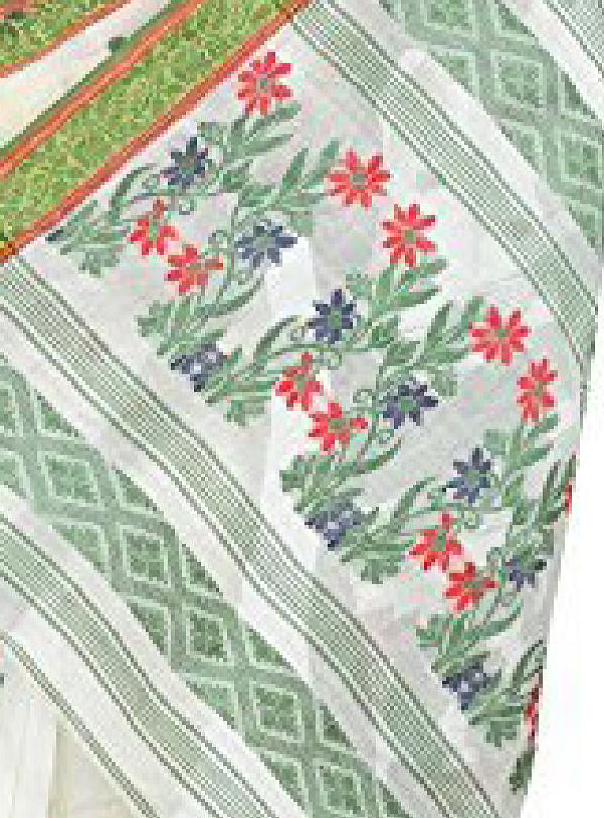Tangail Cotton Saree
Tangail Cotton Saree
Back ground
Tangailsareeis named after the place called Tangail , located in Bangladesh . The handloom weavers of Tangail district are expert in producing finer count cottonsarees decorated with extra warp designs using coloured yarn . The Tangailsaree is a simplification of Jamdani cotton saree but with minimal designs in body portion , there by minimizing the labour and price.

Tangailsarees are a kind of commercial varieties for the use of common people with good finishing to attract the customer. Weavers from Tangail region of then East Bengal, migrated to different parts of West Bengal and settled in places like Fulia, Santipur, Nabadwip in Nadia District, Samudragarh, Dhatrigram, Kalna etc. in BurdwanDisitrict, Gangarampur , Balurghat in D. Dinajpur and they continued their weaving profession for production of TangailSarees.
The traditional tangail borders had a ‘paddo’ or lotus pattern, pradeep or lamp pattern apart from popular ‘ans par’ that was common in Shantipur region.
Materials used
Tangail weavers normally used cotton yarn of 80s to 100s with higher reed count of 72s to 76s. The texture is usually high and compact and they use sized yarn both in warp and weft. Tassar silk yarn, Mercerised cotton yarn were used in the extra warp but now a days , dyed twisted cotton yarn like 2/100s, 2/80s etc. are used as extra warp for making designs in the borders of the sarees . Jacquards are used for making designs in the borders . Coloured yarns are used for both warp and weft and in extra warp also. Tangailsarees are often highlighted with gold or silver thread, which heightens their elegance.
Weaving Technique
Tangailsarees have an unusually fine and smooth texture with a pattern running through every alternate or every two weft threads apart.
Tangail cotton saree is woven with figured motifs, in transparent plain ground, with designs of extra warp in borders and extra weft in the body portion. Border designs are woven with Jacquard usually of 100 to 200 hooks, whereas, designs on body portion are produced by inserting extra weft by finger with the help of Jacuard for lifting the threads. A single jacquard fitted on the loom will cover lifting of both extra warp and threads for body designs. Usually, coloured cotton yarns of 60s or 80s in 4 to 6 ply are used for extra weft in the body portion of the saree and coloured cotton yarns of 2/100s or 2/80s count used for extra warp.
How to distinguish genuine Tangail Saree
Tangailsarees can be identified from the extra warp designs in the borders essentially , and designs in the body which are produced with the help of Jacquard for lifting the threads. Coloured threads are used for the designs as well as in the whole body of the saree.Bulging effect is seen at the design portions of the fabric.
Source : India Handloom Saree
Last Modified : 9/7/2023
This topic provides information about Arni Silk Sa...
This topic provides information about Venkatagiri ...
This topic provides information about Pochhampally...
This topic provides information about Tussar Gichh...
